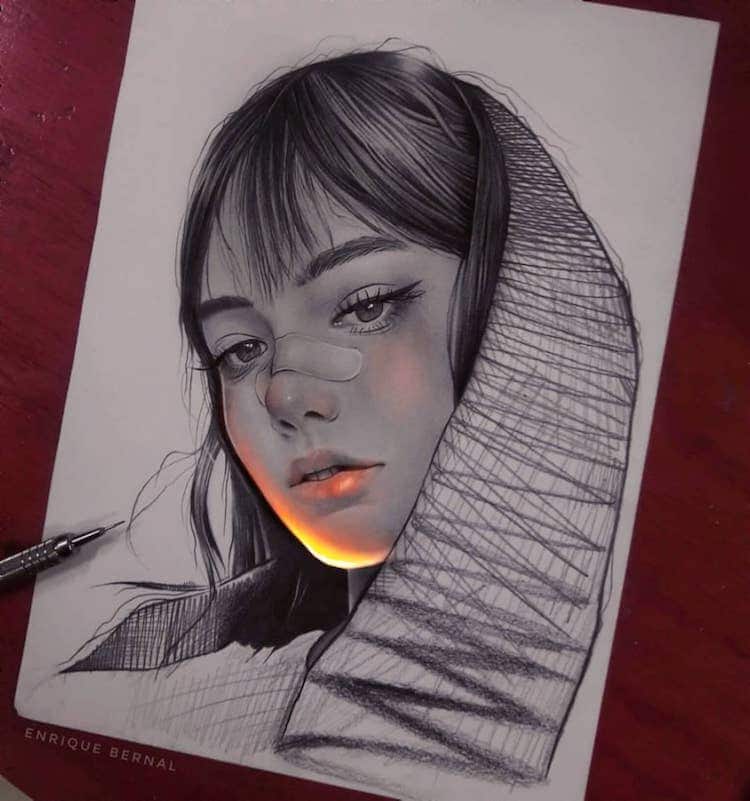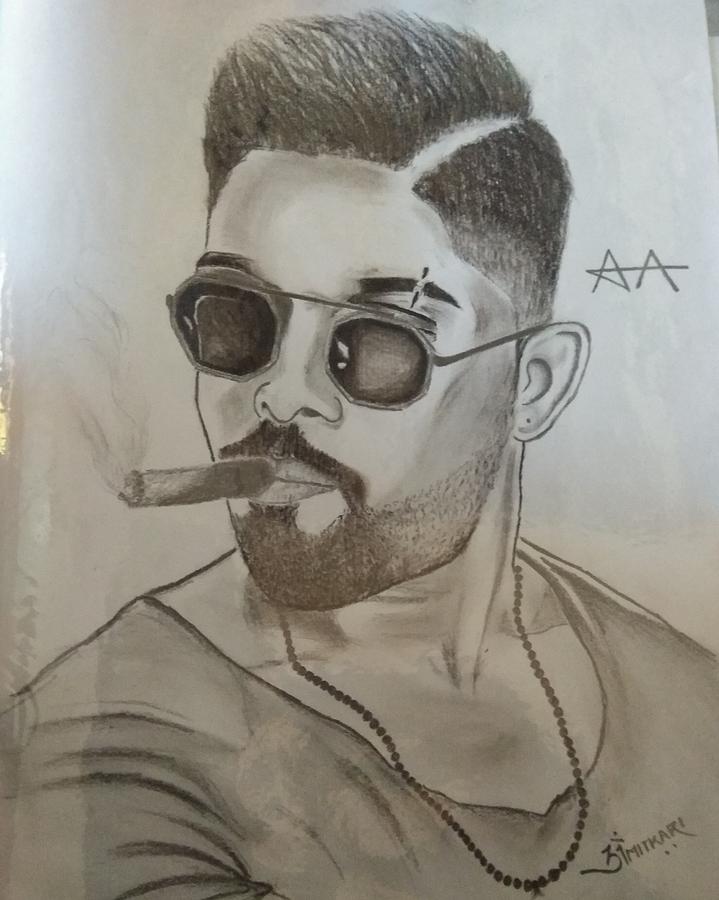
Instead choose a slightly softer/blacker pencil with a lower number. But if you require a darker line, do not choose a very hard pencil and try to apply a lot of pressure as this will only damage the surface. This makes the harder pencils great for plotting out the composition of a watercolour as there is less graphite to mix with and muddy the watercolour applied over it. As can be seen on the chart, the harder the pencil with the higher number, the less material is transferred to the surface. A hard pencil has less of the ‘active’ ingredient, graphite, and more binder. The softer, blacker grades transfer more graphite to the surface so there is more material to smudge. The third line shows shading that has then been smudged downwards with a finger. It is a common error to think that the grades relate to the thickness of the lead but this is not the case. It is worth noting that every pencil used to make the chart was sharpened to the same fine point and that the apparent difference in thickness of line is due to the amount of material that is transferred. The top line shows juxtaposed lines applied with varying pressure from some pressure to very little pressure demonstrating the tones that one grade can achieve. The pencils used for the chart are the Cretacolor Cleos range. The above chart shows the characteristics of each graphite pencil grade.

The determining factor in a pencil grade is the ratio of binder to graphite with the blacker grades having more graphite and the harder grades having more binder. The Grades Chart showing the differences between pencil grades from 9H to 9B Having laid down a base of tonal areas, the form is picked out by the careful removal of the pencil allowing the image to emerge from the darkness. Some artists, however, create very interesting pieces just using a rubber. For sketching, however, rough lines and random marks can add to the piece and so rubbers should not be over used. Interesting tonal areas can also be achieved by rubbing the pencil over paper that has been laid on a textured surface.įor detailed drawings, erasers can lift any errors. Other methods used to express tone include cross-hatching – two layers of crossing lines – dots and smudging the graphite with fingers, stumps or rubbers. The classic technique goes back to the time of Silverpoint and involves drawing closely juxtaposed lines that become lighter and fainter as they move out of shadowed areas into lighter ones. Tones can be achieved in a number of ways. There are no rules governing this – it all depends on your style of drawing, the subject matter or atmosphere that you are seeking to create.

These are the grade of the graphite used, its sharpness, the pressure applied, the speed with which the line was drawn and the texture of the paper. When executing a line drawing, the look of a line depends on several factors. A great characteristic of pencil is that line and tone can be combined in one drawing. A few bold strokes can capture movement whilst tonal shading can define form. Marks can be subtle and delicate or bold and vigorous. Pencils are the most versatile of drawing media because of the variety of marks that can be made. Techniquesĭetail from Hampton Court Palace by Peter Taylor Ward Experiment first to see which combination of grades and papers will get the best results you wish to achieve.

Pencils can be used on smooth papers and Bristol board as well as textured paper such as watercolour and ingres papers but it should be noted that the different grades will achieve different effects on the different surfaces. It is also important to use an appropriate surface. Use various grades in a drawing to give a range of mark-making to achieve depth and interest. For a very light mark – such as for when you are suggesting an outline for a watercolour – use a grade around the 2H mark. For deep, dark shading use a grade from 3B upwards. It is, therefore, important to use the correct pencil for the effect required. There may be a tendency for many users to press too hard on their pencil in an effort to increase intensity causing the paper to suffer. There are also HB pencils, which fall in the middle of the scale and are used as much for writing as drawing and F pencils which are firm.Ī selection of Faber Castell and Creatacolor Graphite Pencils For both types, the higher the number, the harder or blacker they are. The pencils classed as B, on the other hand, are softer and leave much more graphite on the surface.

The harder pencil leaves less graphite on the surface resulting in lighter mark-making. The H stands for hard and the B for black. Sketching graphite Pencils come in a range of grades, from 9B to 9H, that describe the tone of the line that each pencil will produce.


 0 kommentar(er)
0 kommentar(er)
